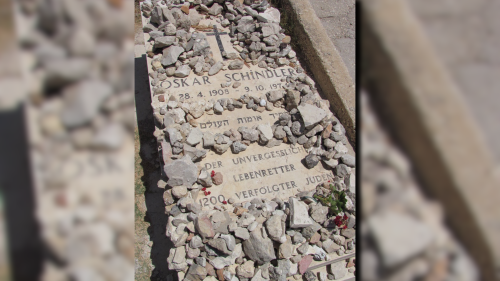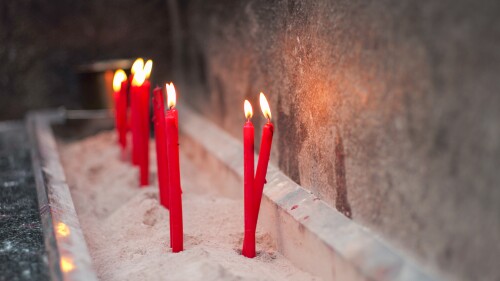Originally published under the title, “How Western Media Enable Islamic Terrorism.”
Western mainstream media habitually conceal the religious identity of Islamic terrorists. |
As the West experiences a rise in the sort of terror attacks that are endemic to the Islamic world—church attacks, sex-slavery and beheadings—it is only natural that the same mainstream media that habitually conceals such atrocities “over there,” especially against Christians and other minorities under Islam, would also conceal the reality of jihadi aspirations “over here.”
As The Commentator reports:
[T]he level of the [media] grovelling after the tragic and deadly saga in Sydney Australia over the last 24 hours has been astounding. At the time of writing, the lead story on the BBC website is of course about that very tragedy, in which an Islamist fanatic took a random group hostage in a cafe, ultimately killing two of them. He did this in the name of Islam. But you wouldn’t get that impression if you started to read the BBC’s lead story, which astoundingly managed to avoid mentioning the words Islam, Islamic, Islamist, Muslim, or any derivations thereof for a full 16 paragraphs.
The New York Times, which led by calling the terrorist, Man Haron Monis an “armed man”, waited until paragraph 11.
In the Guardian’s main story – whose lead paragraph simply referred to a “gunman” — you had to wait until paragraph 24. If you’d have blinked, you’d have missed it. [...]
In the wider media, reports about Muslim fears of a “backlash” have been all but ubiquitous.
As with the Sydney attack, media headlines say it all. The 2011 New Year’s Eve Coptic church attack that left 28 dead appeared under vague headlines: “Clashes grow as Egyptians remain angry after attack,” was the New York Times’ headline; and “Christians clash with police in Egypt after attack on churchgoers kills 21” was the Washington Post‘s—as if frustrated and harried Christians lashing out against their oppressors is the “big news,” not the unprovoked atrocity itself; as if their angry reaction “evens” everything up.
Similarly, the Los Angeles Times partially told the story of an Egyptian off-duty police officer who, after identifying Copts by their crosses on a train, opened fire on them, killing one, while screaming “Allahu Akbar"—but to exonerate the persecution, as caught by the report’s headline: “Eyewitness claims train attacker did not target Copts, state media say.”
A February 2012 NPR report titled “In Egypt, Christian-Muslim Tension is on the Rise,” while meant to familiarize readers with the situation of Egypt’s Christians, prompts more questions than answers them: “In Egypt, growing tensions between Muslims and Christians have led to sporadic violence [initiated by whom?]. Many Egyptians blame the interreligious strife on hooligans [who?] taking advantage of absent or weak security forces. Others believe it’s because of a deep-seated mistrust between Muslims and the minority Christian community [what are the sources of this “mistrust”?].”
The photo accompanying the story is of angry Christians holding a cross aloft—not Muslims destroying crosses, which is what prompted the former to this display of Christian solidarity.
Blurring the line between victim and oppressor—recall the fear of “anti-Muslim backlash” whenever a Muslim terrorizes “infidels” in the West—also applies to the media’s reporting on Muslim persecution of Christians.
The mainstream media shows remarkable consistency in employing an arsenal of semantic games, key phrases, convenient omissions, and moral relativism to portray [Islamist] violence as a product of anything and everything ... not Islam. |
A February 2012 BBC report on a church attack in Nigeria that left three Christians dead, including a toddler, objectively states the bare bone facts in one sentence. Then it jumps to apparently the really big news: that “the bombing sparked a riot by Christian youths, with reports that at least two Muslims were killed in the violence. The two men were dragged off their bikes after being stopped at a roadblock set up by the rioters, police said. A row of Muslim-owned shops was also burned…"
The report goes on and on, with an entire section about “very angry” Christians till one confuses victims with persecutors, forgetting what the Christians are “very angry” about in the first place: nonstop terror attacks on their churches and the slaughter of their women and children.
A New York Times report that appeared on December 25, 2011—the day after Boko Haram bombed several churches during Christmas Eve services, leaving some 40 dead—said that such church bombings threaten “to exploit the already frayed relations between Nigeria’s nearly evenly split populations of Christians and Muslims…" Such an assertion suggests that both Christians and Muslims are equally motivated by religious hostility—even as one seeks in vain for Christian terror organizations that bomb mosques in Nigeria to screams of “Christ is Great!”
Meanwhile, Boko Haram has torched 185 churches—to say nothing of the countless Christians beheaded—in just the last few months alone.
Continuing to grasp for straws, the same NYT report suggests that the Nigerian government’s “heavy-handed” response to Boko Haram is responsible for its terror, and even manages to invoke another mainstream media favorite: the poverty-causes-terrorism myth.
Whether Muslim mayhem is taking place in the Islamic or Western worlds, the mainstream media shows remarkable consistency in employing an arsenal of semantic games, key phrases, convenient omissions, and moral relativism to portray such violence as a product of anything and everything—political and historical grievances, “Islamophobia,” individual insanity, poverty and ignorance, territorial disputes—not Islam.
As such, Western media keep Western majorities in the dark about the Islamic threat, here and abroad. In short, the “MSM” protects and enables the Islamic agenda—irrespective of whether its distortions are a product of intent, political correctness, or sheer stupidity.
Raymond Ibrahim is a Shillman Fellow at the David Horowitz Freedom Center, a Judith Friedman Rosen Writing Fellow at the Middle East Forum and a CBN News contributor. He is the author of Crucified Again: Exposing Islam’s New War on Christians(2013) and The Al Qaeda Reader(2007).








